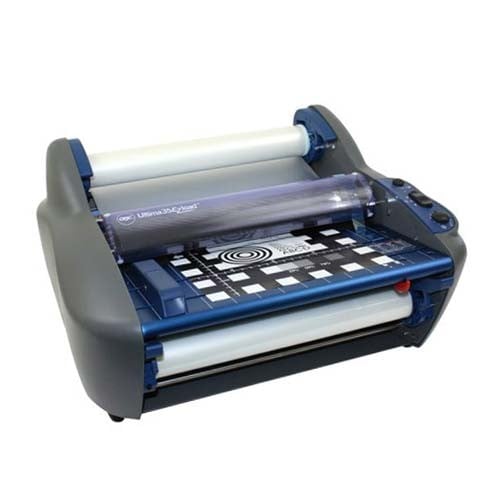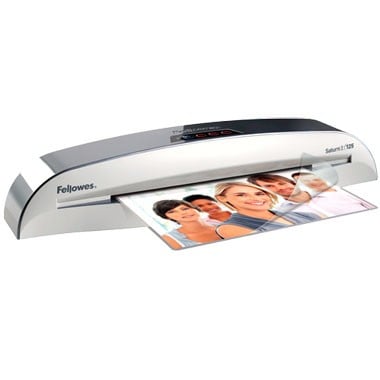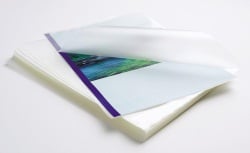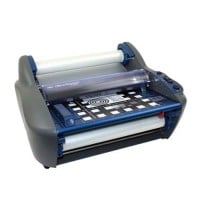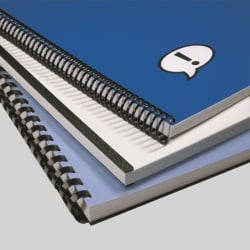MyBinding Knowledge Base
- Binding (248 Article)
- General Binding (42)
- Plastic Comb Binding (57)
- Fastback Binding (59)
- Perfect Binding (2)
- Modular Punching (8)
- Zipbind (3)
- Twin Loop Wire (13)
- Coil Binding (22)
- Thermal Binding (14)
- Strip Binding (1)
- VeloBind (4)
- Binding Covers (14)
- Proclick Binding (10)
- SureBind (4)
- Screw Post (2)
- Hole Punches (2)
- Staplers (4)
- Komtrak Insprial Binding (2)
- Paper (1)
- Rhin-O-Tuff (5)
- Binding Machines Comparison (17)
- Laminating (109 Article)
- General Laminating (26)
- Roll Lamination (16)
- Pouch Lamination (36)
- Pouch Board Laminator (3)
- School Laminator (3)
- Foil Laminating (3)
- Royal Sovereign Laminators (10)
- Laminators Comparison (3)
- Boards (11 Article)
- Bulletin Boards (3)
- Whiteboards (5)
- Chalkboards (1)
- Paper Shredders (44 Article)
- General Shredding (35)
- Industrial Shredders (1)
- Cross-Cut Shredders (2)
- Cardboard Shredders (1)
- Multimedia Shredders (1)
- Personal Shredders (1)
- High Security Shredders (2)
- Ring Binders (9 Article)
- Specialty Binders (2)
- Reinforced Paper (1)
- Health Care Punched Paper (1)
- Perforated Paper (2)
- View Binders (1)
- Index Tabs (9 Article)
- Index Tab Dividers (2)
- Copier Tabs (4)
- Pocket Folders (1)
- Custom Index Tabs (1)
- Pre-Printed Index Tabs (1)
- Paper Handling (37 Article)
- Paper Folders (9)
- Paper Joggers (2)
- Guillotine Cutters (4)
- Rotary Trimmer (3)
- Electronic Paper Cutters (1)
- Corner Rounders (2)
- Paper Scoring (2)
- Paper Drill (2)
- Booklet Makers (3)
- Stack Cutters (1)
- Paper Handling Equipment Comparison (5)
- ID Accessories (12 Article)
- Badge Holder (1)
- Lanyards (8)
- Badge Reels (1)
receive
$5off
*On order $25 or more.
How can I tell the difference between the different types of binding?
Each week on Twitter, members of the print community gather together to discuss various aspects of print. Led by Deborah Corn of Print Media Centr, this weekly discussion is held every Wednesday at 1:00pm PST under the hashtag #printchat and draws everyone from small mom and pop shops to large companies.
We were excited to be asked to cohost yesterday’s #PrintChat and created an interesting twist on a popular game show. We did our best to pick obscure binds in order to stump the players; however, each bind was successfully named. Here is a recap on each of the styles mentioned:
VeloBind: This style is manufactured by GBC with a similar style, SureBind, made by Tamerica. It is one of the few styles that can bind documents over two inches thick. VeloBind machines come in various capacities but the System Three can bind reports up to three inches thick, making it a great choice for law offices, accountants, and anyone needing extra binding space. VeloBind offers both 4-pin and 11-pin strips to hold materials together. While both are very secure, the 4-pin option snaps into place and offers easy editing of documents on the fly. The 11-pin strips permanently rivet the binding pins into place, resulting in a secure, tamper-proof bind. VeloBind can be very cost effective, as you only need one punch (the 11-pin punch accommodates both 11- and 4-pin strips) and one size strips – the excess is trimmed off in the binding process.
FastBack: FastBack binding systems are made by Powis Parker. They have a similar appearance to Perfect bound documents but save significant time and expense. FastBack bound materials give a professional look that can be completed quickly and easily. The cover options are endless and can even be custom printed or foil embossed. Each Fastback document is completed using a binding strip which is also customizable and comes in a variety of lengths and colors. FastBack offers the benefit of a lay-flat spine, no punching required, and an efficient way to get professional look.
PaperLock: PaperLock is a comb binding style made by Prima and is similar to traditional comb binding. The difference comes in the materials used: PaperLock combs are fully recyclable. Both the paper and adhesive used to make the combs are designed to be environmentally friendly, leaving you with a document that can be recycled without first disassembling. The finished product is great for mailing, as the paper combs fold flat. This also makes it excellent for stacked materials. The PaperCombs are surprisingly durable and secure and allow your documents to lay flat. PaperLock is a great option for companies looking for an eco-friendly binding option.
ProClick: Also called ZipBind, this is another style made by GBC. ProClick binding spines work with comb binding punches and offer both large electric closers as well as quick handheld ones. This is an excellent style for sales reps or other professionals who need to edit documents while in the field. The ZipBind closing tool quickly opens the bind to allow pages to be removed or added, and the same tool “zips” the bind closed — no need for a machine or even a new spine. ProClick spines come in basic colors and can give an alternate spine style to plastic combs without needing to purchase a completely new machine.
UniBind: UniBind machines are another option for a fast, professional bind. Simply place your items in the cover and spine of your choice, set them in the machine for the bind cycle, then move to the cooling rack. UniBind machines can bind multiple documents at once in a secure hold. They offer one of the most secure binds available while still allowing editing. The adhesive used makes this a great option for binding heavy papers and coated stocks that don’t work well in other machines. UniBind also allows the binding of your own photobooks.
And a bonus for those who were wondering about the photo of binding styles from yesterday, the correct answer was five: plastic comb, spiral coil, twin loop wire, UniBind, and FastBack.
Have any questions about these or any other binding style? Leave a comment and let us know, and we’ll do our best to answer your questions! Otherwise, we’ll look forward to seeing you at #PrintChat!
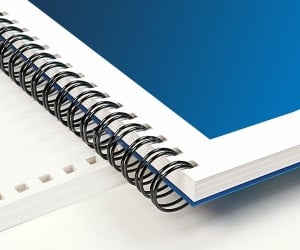
< Over the years, a number of customers have asked me whether they can use twin loop wire with their plastic comb binding machine. These customers often don’t want to have to buy a brand new machine but like the look and feel of twin loop wire binding. However, the answer to their question isn’t as simple as it seems. You see, they actually do make twin loop wire that is designed to work with the plastic comb binding hole pattern. With that said, if you want to use these wires you are going to need a way to close the wires. What is Spiral-O Wire? Let me explain a little bit more…There is a product that we carry called Spiral-O Wire. This wire has 19 loops and is designed to work with the hole pattern from a plastic comb binding machine. Spiral-O Wire is sometimes called Wire Combs or Ibico Wire and was originally designed for use with some of the older Ibico binding machines. A number of the older Ibico plastic comb binding machines also included a twin loop wire closer on the front of them to allow users to use both plastic combs and wire. This 19 loop wire was designed for this purpose. What Equipment is Needed? As the Ibico brand has been phased out by GBC and all of the older Ibico plastic binding machines have been replaced with new models, they no longer have the twin loop wire closer on the front of them. This presents a problem in trying to use these spiral-o wires since you can’t use the wires without a way to close them. One of the only options left is to purchase a Twin Loop wire closer. However, since twin loop wire closers are not incredibly cheap this option usually only appeals to users who have larger electric plastic comb binding machines. Otherwise, it is often advisable to simply buy a low end 3:1 pitch twin loop wire binding machine (the supplies are cheaper). This being said, if you have one of the older Ibico binding machines that has a wire closer included you are in luck. The Spiral-O binding supplies that we carry will work perfectly with your machine and you will be able to use both plastic combs and wire depending on your needs. These Spiral-O binding supplies are available in Black, Silver, White, Blue and Red and in sizes up to 1″ in diameter. If you aren’t sure what type of wire binding supplies that you need to work with your machine simply give us a call. Our trained sales representatives will be glad to help you find the correct supplies for use with your machine.(Read More)
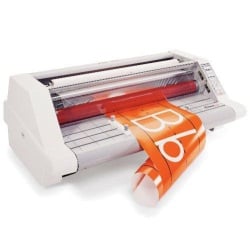

Loading...


